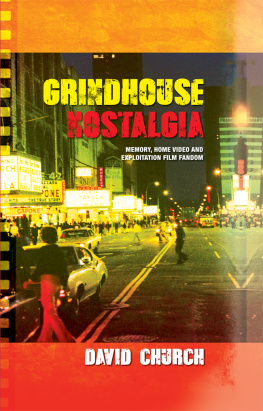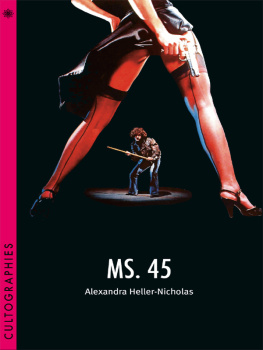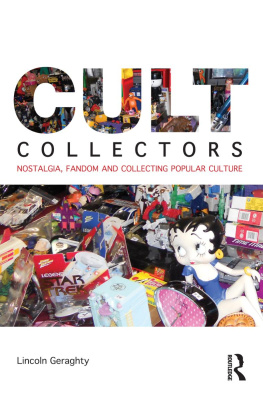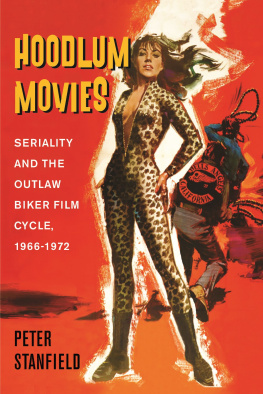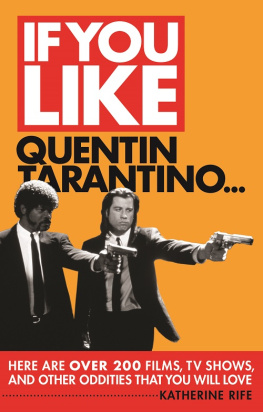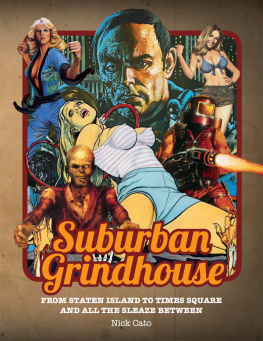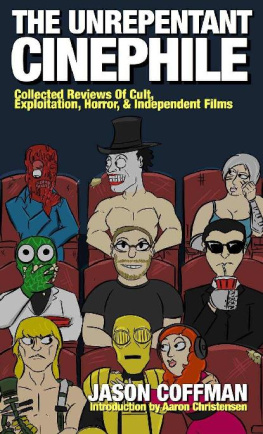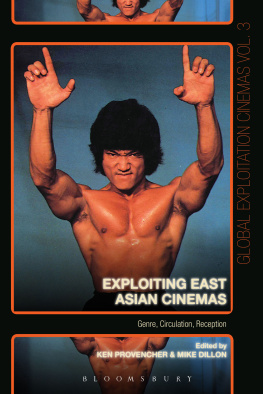Grindhouse Nostalgia
Grindhouse Nostalgia
Memory, Home Video and
Exploitation Film Fandom
David Church
EDINBURGH
University Press
David Church, 2015
Edinburgh University Press Ltd
The Tun Holyrood Road
12 (2f) Jacksons Entry
Edinburgh EH8 8PJ
www.euppublishing.com
Typeset in Monotype Ehrhardt by Servis Filmsetting Ltd, Stockport, Cheshire, and printed and bound in Great Britain by CPI Group (UK) Ltd, Croydon CR0 4YY
A CIP record for this book is available from the British Library
ISBN 978 0 7486 9910 0 (hardback)
ISBN 978 0 7486 9911 7 (webready PDF)
ISBN 978 1 4744 0354 2 (epub)
The right of David Church to be identified as author of this work has been asserted in accordance with the Copyright, Designs and Patents Act 1988 and the Copyright and Related Rights Regulations 2003 (SI No. 2498).
Contents
Figures
Acknowledgements
No doubt I shall be kicking myself in the future over accidental omissions from the following acknowledgements so, if your name does not appear here and justifiably should, please consider me thoroughly and pre-emptively kicked. First of all, thanks to my dissertation committee, including Joan Hawkins, Matt Guterl, Barbara Klinger, and Gregory Waller. The principal writing of this study roughly coincided with the illness and passing of Joans husband but, as my adviser, she remained my main interlocutor throughout, reliably offering her keen feedback across multiple drafts. If any project of this length requires a certain measure of patience and perseverance, my own pales in comparison with hers under the difficult circumstances. For their constructive criticism of various lengthy pieces of this study, my thanks as well to fellow members of Joans dissertation reading group, especially Mark Hain, Laura Ivins-Hulley, Will Scheibel, and Joshua Vasquez. The last two comrades in cinematology served as my sounding board for early ideas, vented frustrations, and shared navigation of the woolly world of doctoral studies. They were also admirably polite in turning down my repeated efforts to foist questionable films into their hands. In addition, Jon Vickers of the Indiana University Cinema invited me to programme several film series growing out of this research project, which kept spirits running high while allowing me to inflict my tastes on a wider audience.
Many other people contributed to this project in ways large and small, whether it was a useful research recommendation or simply a welcome vote of confidence: Peter Bondanella, Roger Corman, Steffen Hantke, I. Q. Hunter, Russ Hunter, James Kendrick, Jerry Kovar, William Lustig, Ernest Mathijs, Jimmy McDonough, James Naremore, Richard Nowell, and Eric Schaefer. The same can be said of the following people who, additionally (and very generously), provided me with early or unpublished versions of articles, chapters, or conference papers that have proven invaluable to my thinking on this topic: Caetlin Benson-Allott, Scott Herring, Katrin Horn, Elena Gorfinkel, Mark Jancovich, Tim Snelson, Jason Sperb, and Will Straw. Ernest Mathijs kindly offered access to the anonymised survey results cited in to reprint scans from his extensive collection of drive-in theatre newspaper advertisements, while Greg Waller also opened his files of drive-in theatre clippings to me. My thanks as well to Michael Fredianelli and Wild Dogs Productions for generously supplying me with a copy of their film The Minstrel Killer; and to Margaret DeWolf and Steve Lundeen for permission to reproduce Nick DeWolfs beautiful photos of 42nd Street in its heyday.
Gillian Leslie, Richard Strachan, Kate Robertson, Eddie Clark and all the people at Edinburgh University Press were wonderful to work with as this project transitioned into a real live book and, of course, I owe a debt to the individuals who took the time to anonymously review the typescript. Parts of were first published as the article From Exhibition to Genre: The Case of Grind-house Films, Cinema Journal 50, no. 4 (2011): 125; copyright 2011 University of Texas Press; all rights reserved. I thank the publishers for graciously allowing me to reprint it.
Finally, I have to thank my family for their love and support, even if I sometimes struggled to describe to them what exactly this project was all about. And my heartfelt gratitude to Stephanie for understanding the necessity of investing long hours with strange and sometimes smutty materials (not that she wasnt invited to join in).
Introduction
Our film opens with an old farmer leading his cow into the barn for the night, where an assailant brutally stabs him to death with a pitchfork. Meanwhile, Jodie is a young man travelling alone in search of himself during a cross-country road trip. Stopping beside a small pond in the California countryside, he meets Melissa, a captivating young woman who invites him back to her familys farmhouse. Melissas parents are not pleased to play host to a stranger, especially once senile but murderous grandmother Lucinda begins leaving her room. To his horror, Jodie soon discovers that Melissa and Lucinda are actually witchcraft-practising sisters hundreds of years old. Melissa had made a satanic pact to save Lucinda from being burned alive by angry townspeople, allowing the former to remain eternally youthful while the latter ages horribly and becomes increasingly homicidal. Such is the bizarre story of The Touch of Satan (1971), a minor exploitation film distributed by Futurama International Pictures in an attempt to capitalise on the earlier success of Rosemarys Baby (1968).
At first glance, this is not an instance of a film that would seem to be a likely candidate for cultural remembrance but, like many other low-budget exploitation films, it has proven remarkably resilient against the forces of obsolescence, in part because it has moved across a range of material sites from theatrical exhibition to VHS to television to DVD and garnered a variety of uses by fans along the way. These different material sites include not only a shift from theatrical to non-theatrical spaces but also encompass each distinct video format as well, since each can be invested with mnemonic value. Though, for example, The Touch of Satan would have probably played at drive-in theatres and urban grind houses upon its initial release, the films continuing fan following today derives largely from having featured in a 1998 episode of Mystery Science Theater 3000 (198899), the cult television series that features hosts offering sardonic running commentary on the perceived aesthetic shortcomings of substandard genre pictures.
At the same time, however, not all contemporary fans of the film necessarily want to keep its memory alive through the reductively ironic lens of mockable badness, instead tempering an awareness of the films datedness with a straight-faced appreciation of its relative effectiveness even today. Indeed, the overlapping, or even conflicting, sources of pleasure that fans may derive from the historical pastness of a film like The Touch of Satan are suggested by discussion-board postings on the films Internet Movie Database page. One user, for example, identifies him/herself as a loyal fan of Mystery Science Theater 3000

